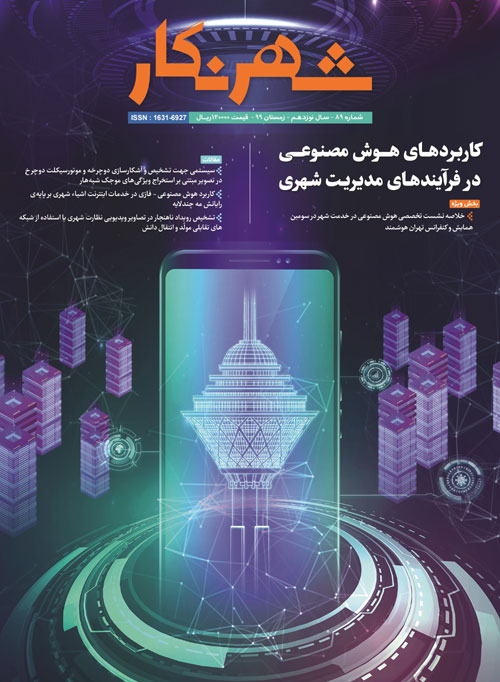فهرست مطالب

دو ماهنامه شهرنگار
پیاپی 89 (زمستان 1399)
- بهای روی جلد: 120,000ريال
- تاریخ انتشار: 1399/12/20
- تعداد عناوین: 6
-
صفحه 44
-
صفحه 49
-
Page 20
Today, the Internet of Things (IoT) has become an integral part of citizens' lives, and a variety of programs and services such as smart city services, smart homes and smart cars are being offered on its platform. Response delays in real-time applications - based on the traditional cloud computing model - have introduced a relatively new concept of cloud computing to bring processing and storage resources closer to IoT sensors and operators. Limited resources in the fog layer have reduced its efficiency. In order to improve the performance of fog layer applications, this paper introduces a new model that uses resources in different layers dynamically. In this model, an intelligent fuzzy control system is used to determine the appropriate location for processing applications in one of the fog layers or the cloud layer or the layers between them. The simulation results show that this model has good performance and reduces the average response time of IoT services 5%
Keywords: Fog computing, fuzzy logic, cloud computing, intelligent load balancing control, real-timeapplication, IoT, smart city, big data, multilayer fog architecture -
Page 30
Abnormal event detection (AED) in urban surveillance videos has multiple challenges. Unlike other computer vision problems, the AED is not solely dependent on the content of frames. It also depends on the appearance of the objects and their movements in the scene. Various methods have been proposed to address the AED problem. Among those, deep learning based methods show the best results. This paper is based on deep learning methods and provides an effective way to detect and locate abnormal events in videos by handling spatio temporal data. This paper uses generative adversarial networks (GANs) and performs transfer learning algorithms on pre trained convolutional neural network (CNN) which result in an accurate and efficient model. The efficiency of the model is further improved by processing the optical flow information of the video. This paper runs experiments on two benchmark datasets for AED problem (UCSD Peds1 and UCSD Peds2) and compares the results with other previous methods. The comparisons are based on various criteria such as area under curve (AUC) and true positive rate (TPR). Experimental results show that the proposed method can effectively detect and locate abnormal events in crowd scenes.
Keywords: methods, AED problem, crowd scenes

